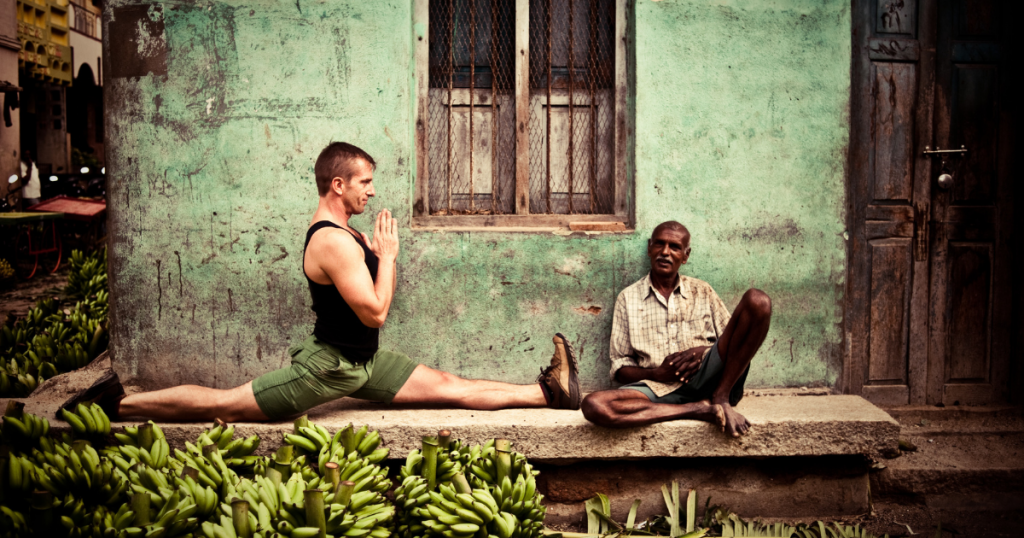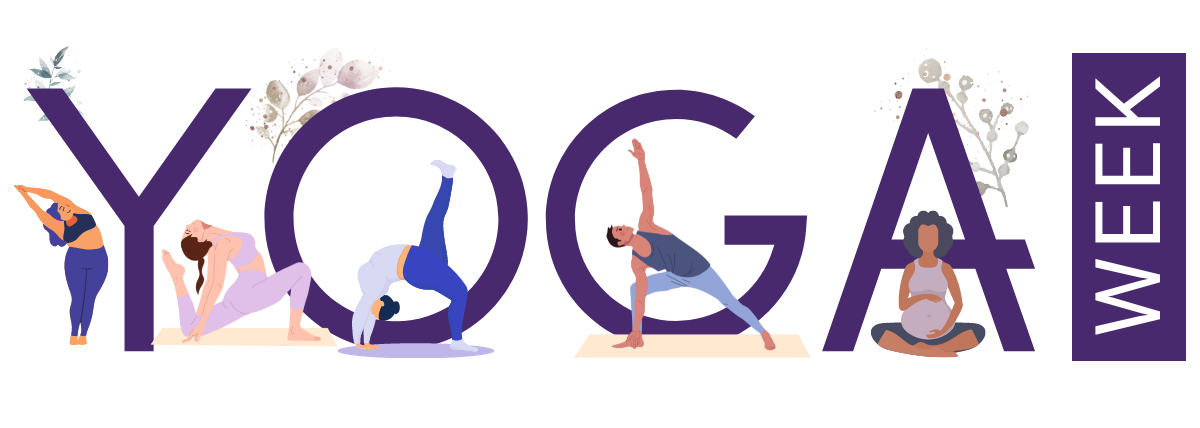Yoga is the union of opposites, this is well known. We apply this idea in our physical asana practice by spending time with our lungs, joints, and spines, attending to and equalising opposites. We explore the top and the bottom of our inhales and exhales, the range of our backward bends and forward folds, the energy of the sun and and moon.
The same principle applies with less physical, more contemplative forms of yoga practice. You can zoom into the microcosm and zoom out to the macrocosm; study your experience in the present moment and also relate it to your perception of the world at large. Notice, and perhaps alter, your inner state to see how it reflects in the mirror of the physical world. This is a healthy and useful technique of yoga that helps you understand yourself and become more skilful, calm, and concentrated in your worldly actions.

The various forms of objective samadhi practice described in Patanjali Yoga Sutras invite us to do this. We choose an “object”, a concept to use as a handle, a pivot point. We select a branch to swing on, a playful oscillation between opposites, in order to cover some ground and consider our options, before acting positively as best we can in the moment.
The Yoga Sutras, being a fundamental text intended to remain relevant and impactful for eons, for the largest imaginable stretches of humanity, uses perennial and abstract concepts such as the blissful nature of consciousness, the transcendental aspects of personhood, and the ultimate and paradoxical state of diversity co-existing with unity. It behoves us to also consider more ordinary objects and applications of the same technique.
Take for example, the concept of pride. On the one side we can perceive pride as egotism and that which is famously said to “cometh before a fall”. On the other hand, we can employ the feeling of pride as a joyous celebration and necessary affirmation of individuality and freedom. The rippling, flow-on effects of the brave ones who risked so much to open the door of free expression is being felt now and will continue to be felt for the rest of humanity’s future! People young and old are now able to respect their own inner compass and act with inspired confidence, without looking over their shoulder in fear. The overall conditions of humanity and our natural environment benefit from this powerful demonstration that sincere and persistent bravery pays off.
Pride can also present itself in the form of nationalism, and this is something that many great Indian seers and sages have endorsed and urged in their students. The great yogi Sri Aurobindo is a pointed example, himself almost imprisoned as a young man for vehement activism against British rule. Nationalism has assisted India with the great struggle of independence in the face of colonialism, and helped them maintain their epic metaphysical and philosophical centre in the face of spreading materialism and consumerism on their doorsteps. But nationalism can also be easily associated with terror, corruption, entrenchment of dogma, and racist conduct. We see it all around the world, implemented as a divisive strategy by governments vying for power.
Here we are, in pride month, celebrating the increasing peace and safety afforded to people with non-binary sexual orientations, additionally celebrating international yoga day, a populist political invention that nonetheless provides the entire planet an opportunity to shout for joy at the effort and struggles of the teachers and adherents that developed and transmitted this system of inquiry.
It is this sense of paradox in our subjective experience that indicates we are on the right track in the pursuit of social evolution, beyond dogma and superstition. When our familiar routines are short-circuited and we have to pause, consider opposite points of view, swing with empathy to and fro, free of our usual automatic judgements – then we know we are investing our time in something worthwhile.
So many beliefs we unconsciously and silently accumulate over decades of life, and it is the straddling of opposites that Patanjali recommends to bring them to the surface, for clear consideration.
So, let us revere the efforts of people through the ages, both people who are well known and people who were never recorded by history. Those who toiled against oppression, those who persisted in their quest to integrate the disowned or shunned differentness within themselves so that it may reflect in the increasing unity of people and living creatures on earth. The paradox of harmonious diversity within unity, called acintyabhedābheda.
See the positive contribution of eons of sentient beings who have toiled, invested, and sacrificed themselves in journeys that have allowed us to arrive right here and right now. Look at what they did, appreciate the high vantage we find ourselves privileged to possess. We have been gifted such an accumulation of riches and knowledge.
Let us celebrate pride month and international yoga day in a way that cherishes the diversity of the past and the diversity of the future. One single enormous ocean spanning all time and space, consisting of innumerable whirls of free expression. An epic song of life.
Josh Pryor – Vice President of Yoga Australia, Yoga Teacher, Author.
https://www.joshpryor.com.au
